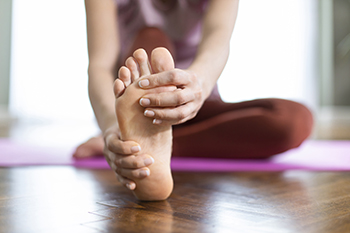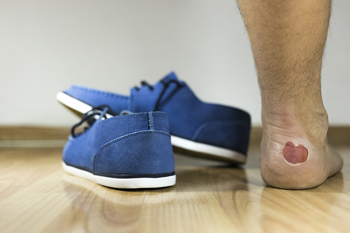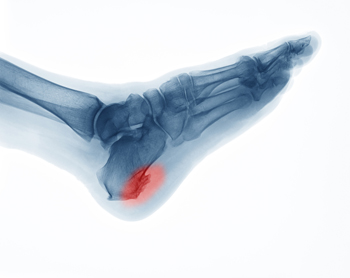
Hikers can easily get wet feet, simply by having to cross a stream, or from a sudden downpour. Hiking experts recommend not hiking in conditions that may cause your feet to get wet. Potential problems from continuing to hike after your feet are wet include developing fungal infections and blisters. Possible infections include athlete’s foot, which can cause cracked, itchy, and inflamed skin between the toes, and toenail fungus, which can cause the nails to crumble and flake. This also can endanger the nail bed itself. Blisters are caused by friction as the side of the toe or heel rubs against the inside of a shoe. If the activity continues when a blister forms, it not only can be painful, but it can become infected. Prevention measures include wearing waterproof boots, carrying an extra pair of moisture-wicking socks, and investing in a pair of gaiters that help to keep your feet dry. For more information on how to keep your feet safe while hiking, it is suggested that you consult a podiatrist.
Sports related foot and ankle injuries require proper treatment before players can go back to their regular routines. For more information, contact Cary Golub, DPM of New York. Our doctor can provide the care you need to keep you pain-free and on your feet.
Sports Related Foot and Ankle Injuries
Foot and ankle injuries are a common occurrence when it comes to athletes of any sport. While many athletes dismiss the initial aches and pains, the truth is that ignoring potential foot and ankle injuries can lead to serious problems. As athletes continue to place pressure and strain the area further, a mild injury can turn into something as serious as a rupture and may lead to a permanent disability. There are many factors that contribute to sports related foot and ankle injuries, which include failure to warm up properly, not providing support or wearing bad footwear. Common injuries and conditions athletes face, including:
- Plantar Fasciitis
- Plantar Fasciosis
- Achilles Tendinitis
- Achilles Tendon Rupture
- Ankle Sprains
Sports related injuries are commonly treated using the RICE method. This includes rest, applying ice to the injured area, compression and elevating the ankle. More serious sprains and injuries may require surgery, which could include arthroscopic and reconstructive surgery. Rehabilitation and therapy may also be required in order to get any recovering athlete to become fully functional again. Any unusual aches and pains an athlete sustains must be evaluated by a licensed, reputable medical professional.
If you have any questions please feel free to contact our offices located in Williston Park, and Long Beach, NY . We offer the newest diagnostic and treatment technologies for all your foot and ankle needs.





